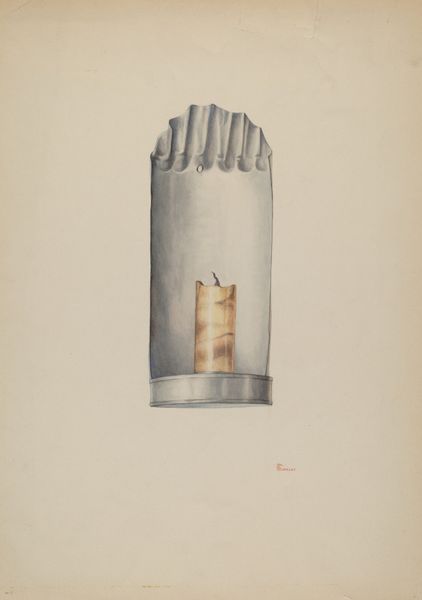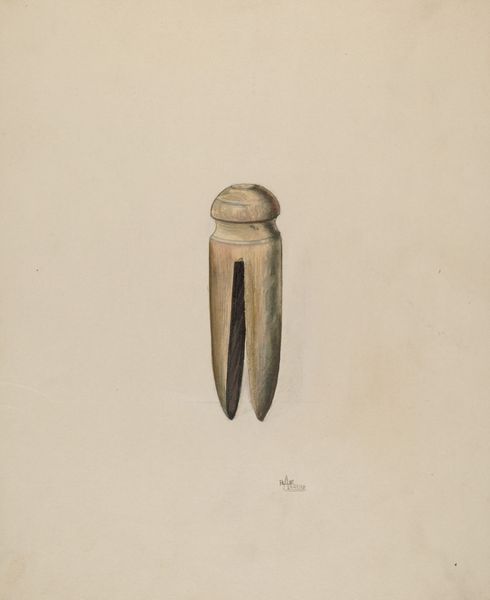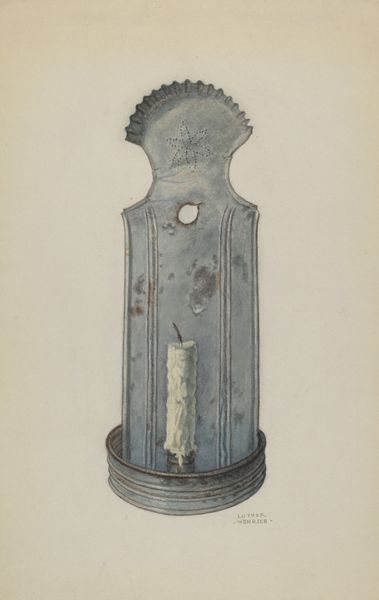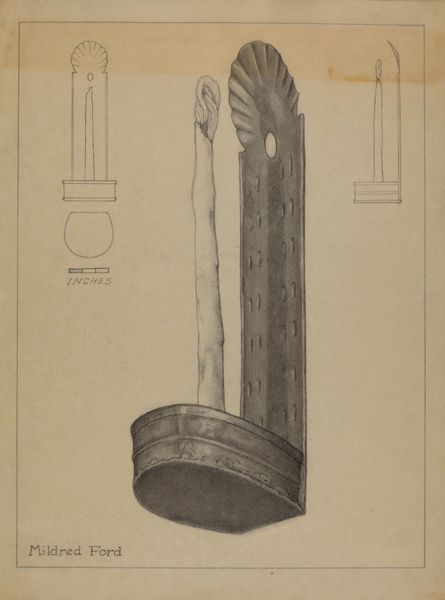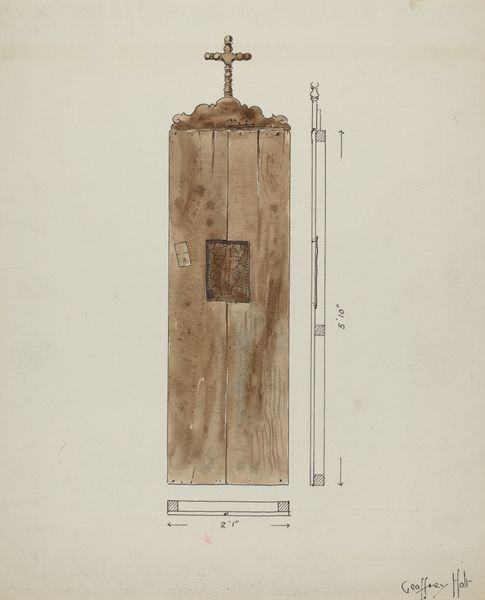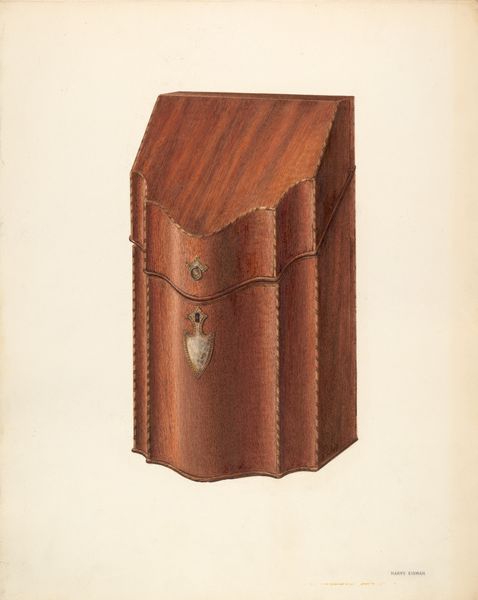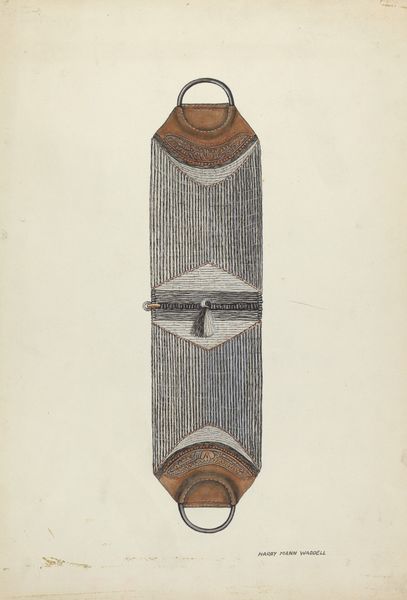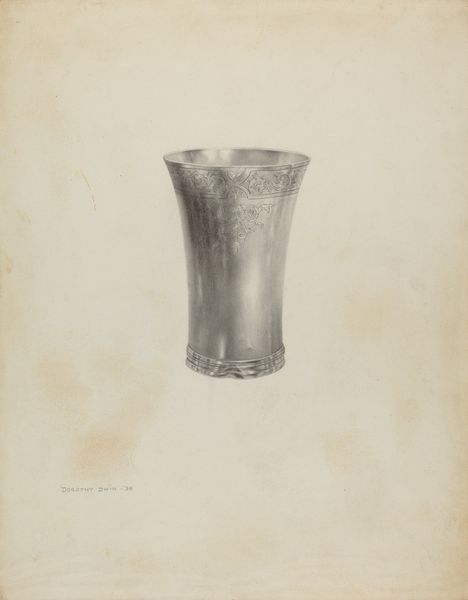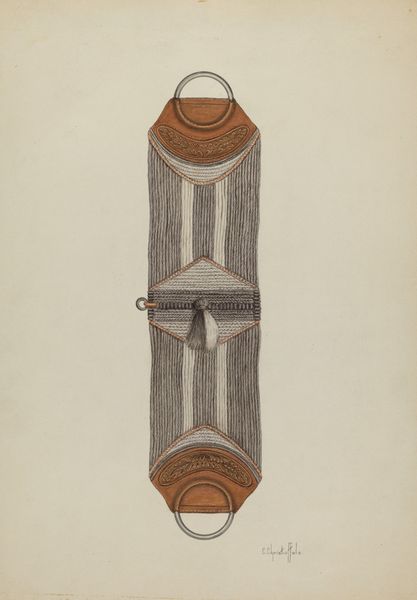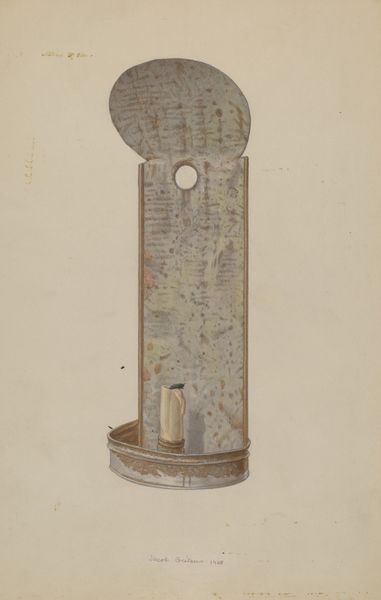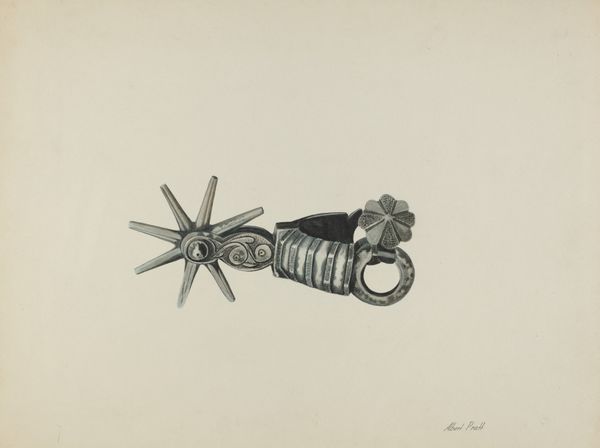
drawing, paper, watercolor, graphite
#
drawing
#
paper
#
watercolor
#
pencil drawing
#
graphite
#
watercolour illustration
#
academic-art
Dimensions: overall: 35.6 x 24.6 cm (14 x 9 11/16 in.)
Copyright: National Gallery of Art: CC0 1.0
Editor: So, here we have William Kieckhofel's "Candle Holder," circa 1940, rendered in graphite, watercolor, and pencil on paper. The subject itself feels so… humble, almost utilitarian. What do you see in this piece? Curator: I see a fascinating study in the materiality of everyday life. Notice the artist’s attention to rendering the candle holder. What material is being represented and what do those material choices say about art and labor during this period? Editor: It appears to be metal... maybe pewter or a similar alloy? Its function is so basic, holding a candle, and the drawing style is very precise. I am wondering, is the candleholder itself a commodity good or perhaps more individually crafted? Curator: Exactly! Consider how industrial processes impacted both artistic representation and the objects we consume. A materialist approach compels us to look at where this object might have been made and to understand production during wartime. Can we interpret this image through a lens of consumption? Editor: Consumption...like the burning of the candle itself is an act of consumption? Or the material and how easy and cheap it could be to find or make a holder at this time. It adds a really interesting angle. Curator: Precisely! We see how the piece encourages viewers to acknowledge that everything, from the holder itself to the burning candle it houses, participate in circuits of materials and production. Do we elevate a material in an artwork compared to its practical role? How does this elevation reflect economic or social hierarchies? Editor: I guess it challenges that traditional boundary, elevating this humble, functional thing. Looking at the medium as the message here! Curator: Absolutely. It pushes us to reconsider the labor embedded in what we often overlook. Thinking about the impact the process of making has on artistic expression makes this seemingly mundane still life a provocative statement about mid-century America. Editor: This has changed how I see it, from simple object to a statement on the means of production!
Comments
No comments
Be the first to comment and join the conversation on the ultimate creative platform.
